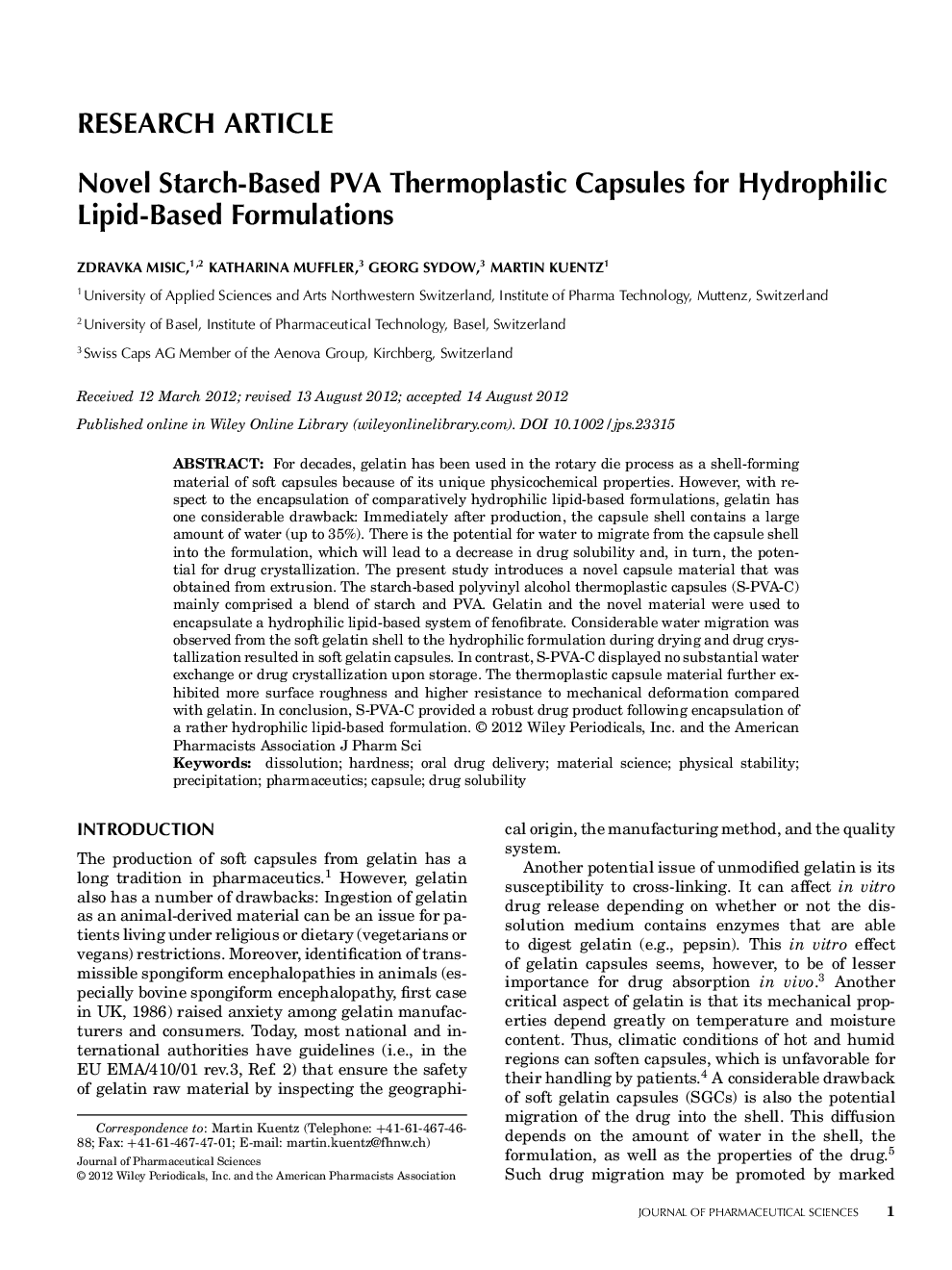| Article ID | Journal | Published Year | Pages | File Type |
|---|---|---|---|---|
| 2485644 | Journal of Pharmaceutical Sciences | 2012 | 13 Pages |
Abstract
For decades, gelatin has been used in the rotary die process as a shellâforming material of soft capsules because of its unique physicochemical properties. However, with respect to the encapsulation of comparatively hydrophilic lipidâbased formulations, gelatin has one considerable drawback: Immediately after production, the capsule shell contains a large amount of water (up to 35%). There is the potential for water to migrate from the capsule shell into the formulation, which will lead to a decrease in drug solubility and, in turn, the potential for drug crystallization. The present study introduces a novel capsule material that was obtained from extrusion. The starchâbased polyvinyl alcohol thermoplastic capsules (SâPVAâC) mainly comprised a blend of starch and PVA. Gelatin and the novel material were used to encapsulate a hydrophilic lipidâbased system of fenofibrate. Considerable water migration was observed from the soft gelatin shell to the hydrophilic formulation during drying and drug crystallization resulted in soft gelatin capsules. In contrast, SâPVAâC displayed no substantial water exchange or drug crystallization upon storage. The thermoplastic capsule material further exhibited more surface roughness and higher resistance to mechanical deformation compared with gelatin. In conclusion, SâPVAâC provided a robust drug product following encapsulation of a rather hydrophilic lipidâbased formulation.
Keywords
Related Topics
Health Sciences
Pharmacology, Toxicology and Pharmaceutical Science
Drug Discovery
Authors
Zdravka Misic, Katharina Muffler, Georg Sydow, Martin Kuentz,
